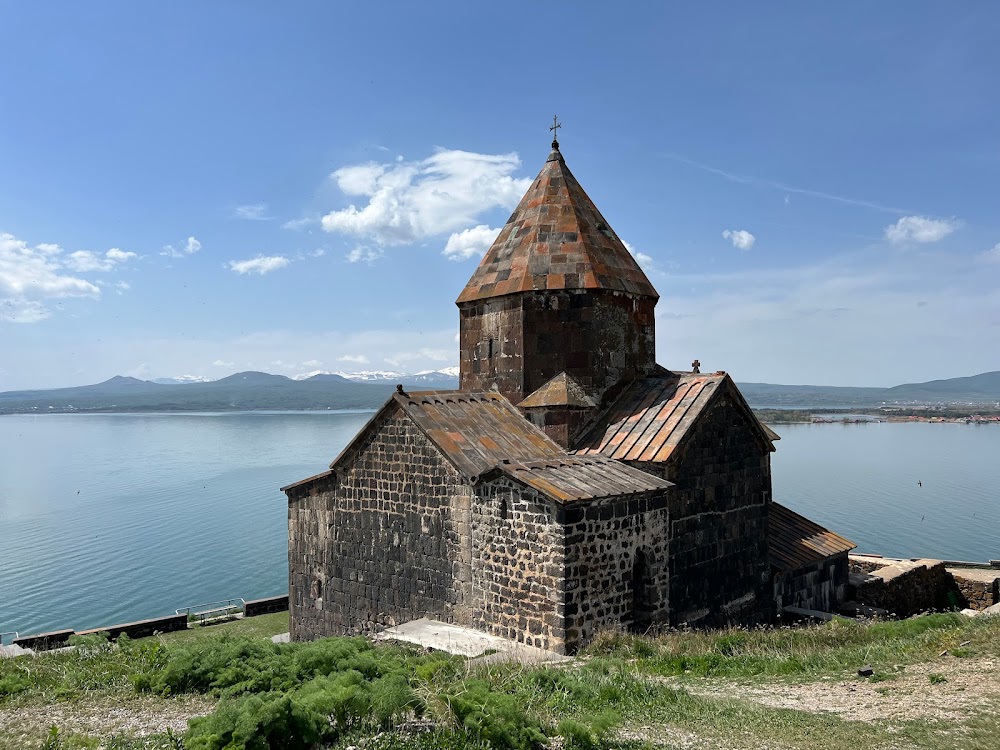Hayravank Monastery (Հայրավանք)
Related Places
Overview
Hayravank Monastery: A Jewel of Medieval Architecture
Nestled on the western shores of Lake Sevan in Armenia's Gegharkunik Province, the Hayravank Monastery is a breathtaking example of medieval architecture. Perched on a rocky promontory, this enchanting site offers stunning views of the expansive lake, creating a harmonious blend of natural beauty and human craftsmanship.
A Rich Historical Background
The origins of Hayravank Monastery trace back to the 9th century, with construction believed to have occurred between the 9th and 12th centuries during the reign of the Bagratuni kings. This era is renowned for a flourishing of art and architecture in Armenia, marked by the establishment of numerous churches and monasteries throughout the region.
Architectural Features
The monastery complex comprises the main church, a chapel, and a gavit—a narthex typical in Armenian architecture. The main church, dedicated to Saint Stepanos, exhibits a classic Armenian design with its cruciform layout and central dome. Constructed from volcanic tuff stone, the monastery showcases warm hues of pink and orange, reflecting the sophisticated architectural techniques of its time.
One of the standout features of Hayravank Monastery is its intricate stone carvings. The facades are beautifully adorned with detailed crosses and geometric patterns, showcasing the exceptional skills of Armenian artisans. Inside, visitors can explore remnants of ancient frescoes and stone carvings, making it a treasure trove of medieval art.
The Gavit: A Gathering Place
Added in the 12th century, the gavit served as a communal space for monks and pilgrims. This square hall, topped by a central dome supported by twelve columns, features an architectural style reminiscent of other Armenian monasteries, yet it distinguishes itself with unique decorative elements and layout.
Resilience Through the Ages
Over the centuries, Hayravank Monastery has withstood invasions, natural disasters, and periods of neglect. Despite these challenges, it remains a symbol of spiritual and cultural significance. The surrounding cemetery is dotted with numerous khachkars (carved cross-stones), each a unique masterpiece that reflects the rich tradition of Armenian stone carving.
Preservation and Restoration Efforts
In recent years, dedicated efforts have been made to preserve and restore Hayravank Monastery. These restoration initiatives focus on maintaining the structural integrity of the buildings while safeguarding the rich artistic heritage within its walls. Today, the monastery stands as a testament to the enduring legacy of Armenian culture and Christianity.
Legends and Lore
Beyond its architectural beauty, Hayravank Monastery is steeped in legend. Local tradition recounts the story of a hermit monk named Hovhannes, or Hayrapet, who is said to have founded the first monastic community at this site. His piety attracted many followers, contributing to the monastery's growth and ultimately leading to its name, Hayravank, in honor of the revered monk.
A Destination for All
Visitors to Hayravank Monastery can delve into its historical and spiritual significance while soaking in the stunning landscape. The tranquil environment of Lake Sevan, combined with the ancient stone structures, creates a reflective atmosphere that draws tourists, scholars, and pilgrims alike.
Whether your interests lie in history, architecture, or simply seeking a peaceful retreat, Hayravank Monastery captures the essence of Armenia's rich cultural tapestry. Through its enduring stone walls and breathtaking vistas, it continues to narrate the story of Armenia's past, resilience, and dedication to faith and artistry.







